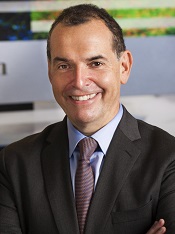 |
| Sanford-Burnham Medical Research Institute CEO Perry Nisen |
Back in January, the prestigious Sanford-Burnham Medical Research Institute amended its ethos, promising to more closely marry its work to therapeutic development and become a partner of choice for drugmakers. Now, the 38-year-old organization has chosen the leader to get it there, convincing GlaxoSmithKline's ($GSK) Perry Nisen to take the reins as its new CEO.
Nisen, most recently GSK's senior vice president of science and innovation, comes in just months after Sanford-Burnham locked down its largest-ever gift, a $275 million anonymous pledge to be paid out over 10 years. With that funding and Sanford-Burnham's ranks of more than 1,000 scientists, Nisen hopes to transform the institute into a drug-discovery powerhouse, bridging the chasm between industry and academy.
Over the past 10 years, Big Pharma has been increasingly externalizing and downsizing its research, a process that has particularly squeezed discovery efforts, Nisen said. A sort of industrywide ADHD finds the world's largest drugmakers getting in and out of programs too early, he said, struggling to conduct basic research and validate targets.
Academia, on the other hand, has long excelled at such projects, but the two parties tend to speak different languages altogether, Nisen said, creating a gap that keeps many promising preclinical discoveries from matriculating into drug development programs.
That's where Sanford-Burnham can step in. Nisen's plan is to encourage unfettered, collaborative research that is already suited for professional drug discovery, he said, crafting an institution able to think more creatively than Big Pharma while focusing more on value creation than nonprofits tend to do.
"Monolithic ways forward are not the way to go," Nisen told FierceBiotech. "There are a number of ways to engage and partner in which everybody gets what they need. Sanford-Burnham has a real opportunity to be creative, to be nimble, to be flexible."
| Nisen on his vision for the institute--courtesy of Sanford-Burnham |
Nisen has "all the scars to show" after 20 years in drug development, and he intends to inculcate a "drug-sniffing capability" at his new job, he said, pushing scientists to ferret out potential medicines to match unmet needs. And while the institute's $275 million war chest will more than keep the lights on over the next decade, Nisen's plan is to create a perpetual-motion R&D machine, using revenue from partnerships to replenish its coffers and fund more translational research.
Ten years from now, Nisen envisions Sanford-Burnham as the bespoke keystone between Big Pharma and academia, at once drawing the best and brightest investigators to join its ranks and counting the business world's elite among its partners.
"It's exciting in a way that's harder and harder to do in pharma and not so realistic in pure academia," Nisen said. "We have the opportunity to really link the science to professional drug discovery and partnerships to really have an impact on the human condition beyond what you see at the end of a paper or grant."
The GSK vet's move inverts that of his predecessor, ex-Sanford-Burnham CEO John Reed, who left the institute last year to lead a turnaround at Roche's ($RHHBY) pRED division. Kristiina Vuori, who has been serving as interim chief ever since, will retain her role as president of the organization as Nisen comes aboard.
- read the announcement